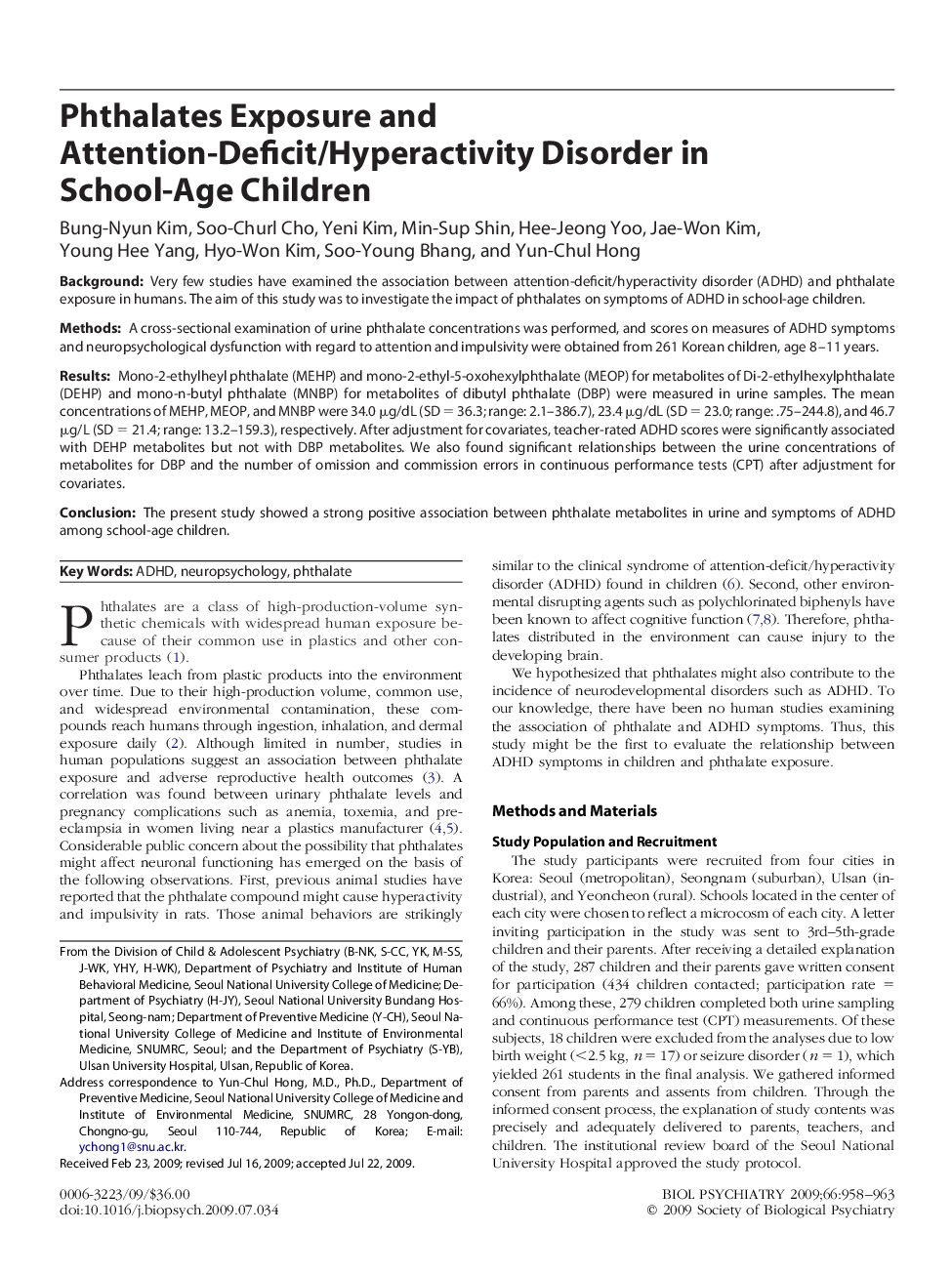| کد مقاله | کد نشریه | سال انتشار | مقاله انگلیسی | نسخه تمام متن |
|---|---|---|---|---|
| 4179381 | 1276546 | 2009 | 6 صفحه PDF | دانلود رایگان |

BackgroundVery few studies have examined the association between attention-deficit/hyperactivity disorder (ADHD) and phthalate exposure in humans. The aim of this study was to investigate the impact of phthalates on symptoms of ADHD in school-age children.MethodsA cross-sectional examination of urine phthalate concentrations was performed, and scores on measures of ADHD symptoms and neuropsychological dysfunction with regard to attention and impulsivity were obtained from 261 Korean children, age 8–11 years.ResultsMono-2-ethylheyl phthalate (MEHP) and mono-2-ethyl-5-oxohexylphthalate (MEOP) for metabolites of Di-2-ethylhexylphthalate (DEHP) and mono-n-butyl phthalate (MNBP) for metabolites of dibutyl phthalate (DBP) were measured in urine samples. The mean concentrations of MEHP, MEOP, and MNBP were 34.0 μg/dL (SD = 36.3; range: 2.1–386.7), 23.4 μg/dL (SD = 23.0; range: .75–244.8), and 46.7 μg/L (SD = 21.4; range: 13.2–159.3), respectively. After adjustment for covariates, teacher-rated ADHD scores were significantly associated with DEHP metabolites but not with DBP metabolites. We also found significant relationships between the urine concentrations of metabolites for DBP and the number of omission and commission errors in continuous performance tests (CPT) after adjustment for covariates.ConclusionThe present study showed a strong positive association between phthalate metabolites in urine and symptoms of ADHD among school-age children.
Journal: Biological Psychiatry - Volume 66, Issue 10, 15 November 2009, Pages 958–963